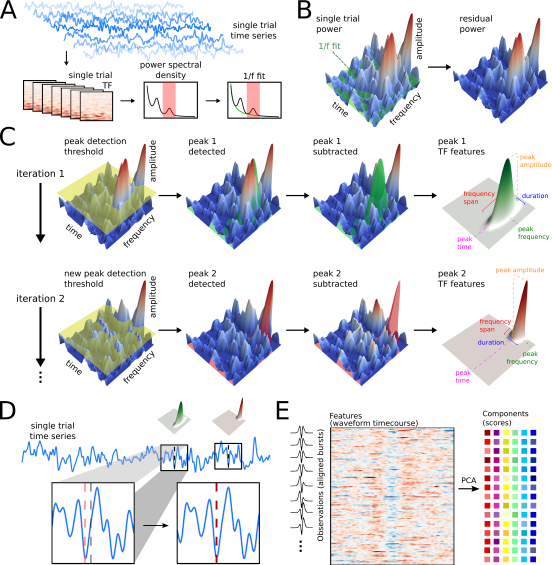Diverse beta burst waveform motifs characterize movement-related cortical dynamics

Abstract
Classical analyses of induced, frequency-specific neural activity typically average band-limited power over trials. More recently, it has become widely appreciated that in individual trials, beta band activity occurs as transient bursts rather than amplitude-modulated oscillations. Most studies of beta bursts treat them as unitary, and having a stereotyped waveform. However, we show there is a wide diversity of burst shapes. Using a biophysical model of burst generation, we demonstrate that waveform variability is predicted by variability in the synaptic drives that generate beta bursts. We then use a novel, adaptive burst detection algorithm to identify bursts from human MEG sensor data recorded during a joystick-based reaching task, and apply principal component analysis to burst waveforms to define a set of dimensions, or motifs, that best explain waveform variance. Finally, we show that bursts with a particular range of waveform motifs, ones not fully accounted for by the biophysical model, differentially contribute to movement-related beta dynamics. Sensorimotor beta bursts are therefore not homogeneous events and likely reflect distinct computational processes.